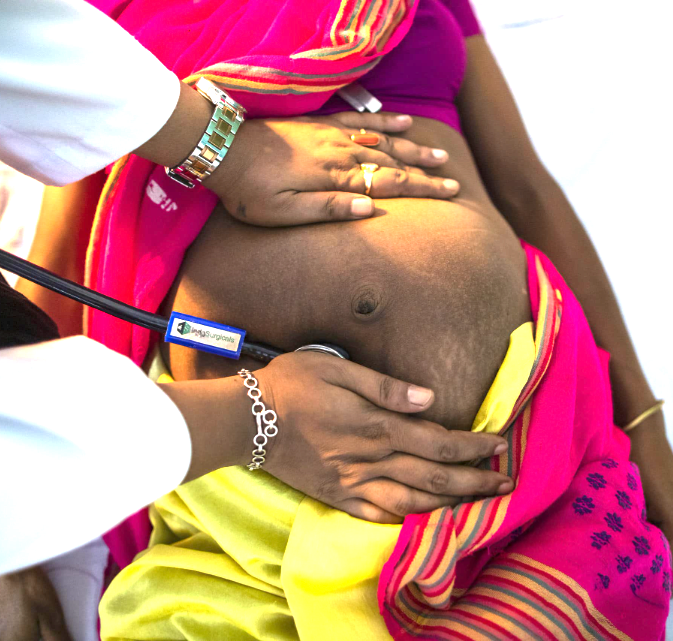Child and maternal mortality rates are critical indicators of the overall health and well-being of populations. Despite progress in many regions, these rates remain unacceptably high in several parts of the world. Understanding the factors contributing to these deaths and implementing effective interventions is essential to improving health outcomes for mothers and their children.
Understanding Child and Maternal Mortality
Child Mortality refers to the death of children under five years of age. The Under-5 Mortality Rate (U5MR) is a key statistic used to measure child health. In 2022, approximately 5 million children under five died, with the leading causes being preventable diseases such as pneumonia, diarrhea, and malaria, as well as complications during birth.
Maternal Mortality refers to the death of a woman during pregnancy, childbirth, or within 42 days of termination of pregnancy due to complications. The Maternal Mortality Ratio (MMR) is an important measure of the quality of healthcare systems. In 2020, around 287,000 women died from complications related to pregnancy and childbirth, with significant disparities between developed and developing countries.
Key Factors Contributing to High Mortality Rates
- Lack of Access to Healthcare: Many women and children lack access to quality healthcare services, particularly in rural or impoverished areas. This includes prenatal care, skilled attendance during childbirth, and postnatal care.
- Poverty: Economic disparities play a significant role in mortality rates. Families in poverty often cannot afford healthcare services, nutritious food, or safe living conditions.
- Education: Maternal education is strongly linked to health outcomes. Educated mothers are more likely to seek medical help, practice healthy behaviors, and ensure their children receive necessary vaccinations and healthcare.
- Nutrition: Malnutrition is a critical issue. Poor maternal nutrition can lead to complications during pregnancy and affect fetal development, increasing the risk of child mortality.
- Infectious Diseases: High rates of infectious diseases, such as HIV/AIDS, malaria, and tuberculosis, contribute significantly to maternal and child mortality, particularly in low-income countries.
- Conflict and Displacement: In areas affected by conflict, maternal and child health services are often disrupted, leading to higher mortality rates.
Strategies to Reduce Child and Maternal Mortality
- Improving Access to Healthcare: Expanding access to quality healthcare services, including prenatal and postnatal care, can significantly reduce mortality rates. This includes training more healthcare workers and improving infrastructure in underserved areas.
- Education and Empowerment: Promoting education for girls and women empowers them to make informed health choices. Programs that educate families about nutrition, hygiene, and healthcare can have a positive impact.
- Nutrition Programs: Implementing maternal and child nutrition programs can improve health outcomes. Providing supplements and promoting breastfeeding can enhance maternal and child nutrition.
- Vaccination and Preventive Care: Ensuring that children receive vaccinations and preventive care can significantly reduce mortality from infectious diseases. Community health initiatives can help facilitate access to these services.
- Community Engagement: Involving communities in health initiatives fosters a sense of ownership and can lead to more effective health education and outreach efforts.
- Addressing Socioeconomic Factors: Tackling poverty and improving living conditions through social programs can lead to better health outcomes. This includes access to clean water, sanitation, and adequate housing.
Global Efforts and Progress
Organizations like the World Health Organization (WHO), UNICEF, and various non-governmental organizations (NGOs) are working to reduce child and maternal mortality globally. Initiatives such as the Sustainable Development Goals (SDGs) aim to end preventable deaths of newborns and children under five and reduce the global maternal mortality ratio by 2030.
Significant progress has been made in some regions, with many countries reducing their mortality rates through targeted health interventions. However, achieving universal health coverage and equitable access to services remains a challenge.
Conclusion
Child and maternal mortality are pressing global health issues that require urgent attention and action. By addressing the underlying causes and implementing comprehensive strategies, we can work towards a future where all mothers and children have the opportunity to thrive. Ensuring access to quality healthcare, education, and nutrition is essential for improving health outcomes and achieving equity in health across the globe.
